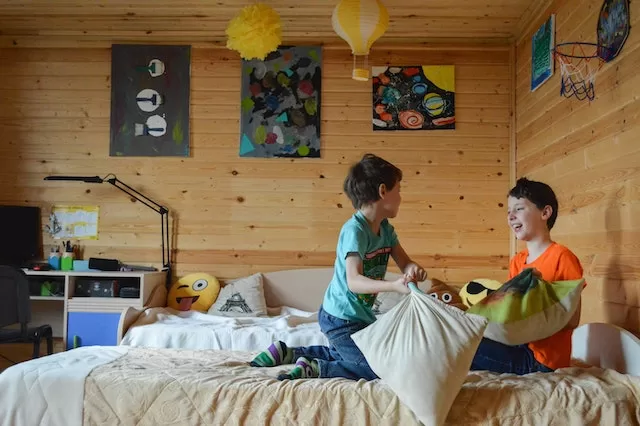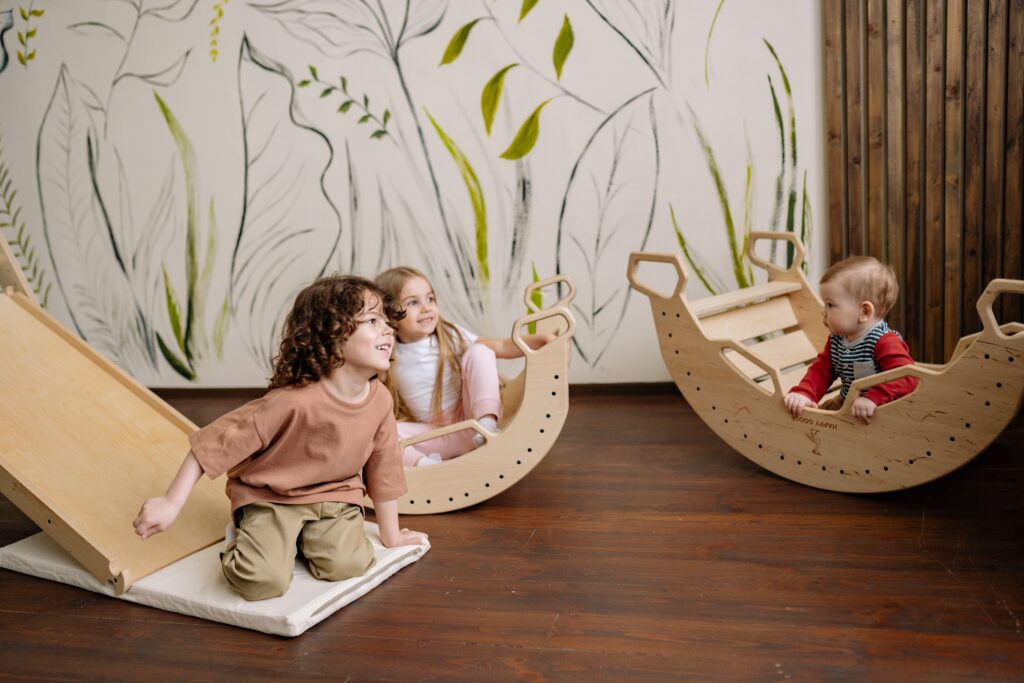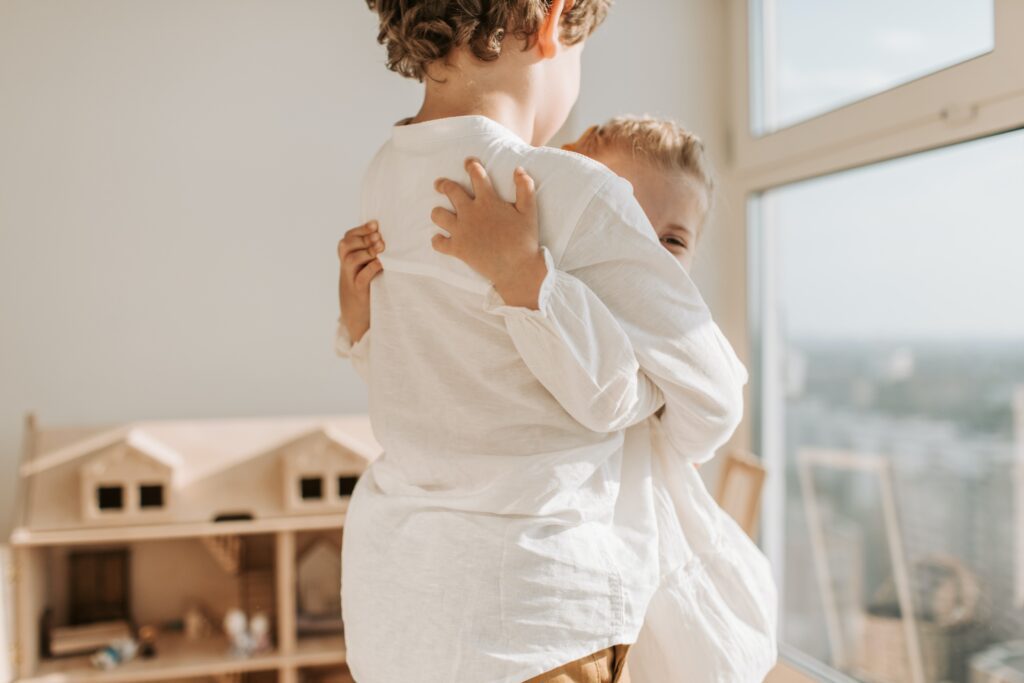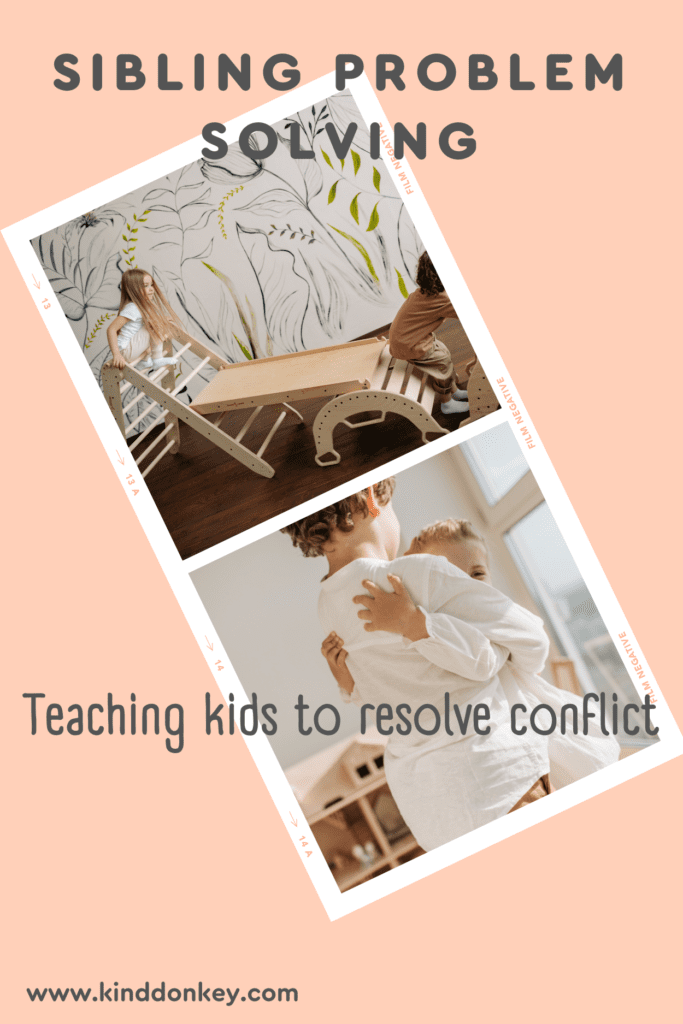Conflict is a normal part of growing up with siblings, but teaching kids sibling problem resolution can have a big impact on their happiness. Children with siblings will benefit from learning and practicing positive conflict resolution strategies.
By learning to solve their own conflicts, kids can become better problem-solvers, have higher self-esteem, and develop stronger relationships with their siblings and friends.
What are the benefits of teaching kids to resolve sibling conflicts?
If you landed here, you probably already feel like your family life would be better if you invested some time in improving your kids’ conflict-solving skills.
So maybe I don’t have to convince you, but I will give you a list of the benefits of teaching sibling problem-solving skills to your kids in case you need some extra motivation to do the work and teach them.
Better emotional regulation
In order to resolve sibling conflicts, they need to learn to regulate their own emotions first. If they can’t control their anger when their little sibling destroys their construction, they won’t solve anything.
If they feel shameful because of something bad they did and they don’t know how to turn around that feeling into something good, they won’t solve anything.
Knowing how to regulate their emotions will be good for their mental well-being as kids and in the future.
Better communication skills
To solve problems with their sibling they need to be able to express their needs and preferences and listen to the needs and preferences of their sibling.
Sometimes, they have to adapt to the language ability of their younger sibling. Sometimes they need to understand the difference in the developmental stage between each other and find solutions that make everyone win.
Communicating with an adult is one thing, but communication with other children is a different skill.
By encouraging siblings to communicate with each other you will make them more socially desirable to other children in the future. Making your child someone everyone will want to make friends with is one of the biggest gifts you can give them.
Kids with strong communication skills are better able to express themselves and understand others, which can lead to stronger and more positive relationships.
Better self-esteem
Solving their own problems without your help will make them feel capable.
Anything that they can do by themselves will make them feel capable.
But being able to resolve sibling squabbles on their own will give them confidence in other social environments with other kids.
Having good friends makes people happy and healthier.
Better resilience
Knowing to resolve conflicts on their own will make them more resilient.
They will manage challenges and stress better because they will have the knowledge and the confidence to solve problems.
Stronger relationships
Having siblings is awesome if you learn to make friends because of them.
Kids usually practice social skills with their siblings since they are very little, they do it in a safe and comfortable environment with the help of their parents, and they do it every day.
Learning to have a good relationship with siblings is the best practice for learning to make friends and maintain friendships.
Learning to take care of the relationship they have between siblings will teach them to take good care of the relationship they have with their friends.
More sense of responsibility
Working out the conflicts with their siblings is a great responsibility.
They will take responsibility for nurturing their relationships with each other and also for their mistakes.
More tolerance
In order to solve conflicts, we need to have empathy for others and understand that people are different and react to things differently. Resolving conflicts with their siblings will help them understand different perspectives in other situations.
They will become more tolerant of different people with different backgrounds.
And they will learn that sometimes, someone else’s feelings have nothing to do with them. Sometimes anger comes from within, and you just happen to be on the receiving end because you are right there.
Easier life for the parents
Let’s not overlook the impact on the parent’s life. Not having to solve their sibling’s problems for them is going to make life so much easier for you.
What are common conflicts between siblings?

The most common conflict between siblings is competition. Siblings compete for shared resources and space, attention, and love from their parents, and for control. Sometimes, conflicts between siblings come from unrelated repressed feelings.
Siblings that are in roughly the same developmental stage may have the same interests and have a hard time taking turns and sharing toys and space.
When it comes to the love and attention from parents, luckily we can do a lot to reduce that. We just have to show infinite love to each of our children. Admiring them one by one and as a whole family.
The issue of control is the most delicate one. The older siblings will usually take the role of leader, and the younger ones will be followers. Sometimes, they are completely fine having these roles, but sometimes there can be some resentment. It is important that leadership won’t transform into manipulation.
What does healthy problem-solving between siblings look like?
First of all, teaching kids to resolve conflict requires knowing how to resolve conflict first.
Not all of us adults know how to do it.
Active listening
When there is a conflict, they will have to discuss what happened.
Active listening is not the same as hearing the words someone is saying.
To listen actively, they have to pay attention to what the other sibling is saying without getting distracted. They should wait their turn to talk without interrupting each other. They should put themselves in the other one’s shoes and try to see things from their perspective, trying to not get defensive.
Before they respond, they should make sure first that they understood the other one’s perspective.
Respect
It doesn’t matter how hurt or angry they are. There should be a very firm boundary on always treating everyone with respect.
They can be hurt and angry, and they can say it. They can lose it a little bit and make angry voices, but they can never shout or call names. And of course, hitting is not allowed either.
Open communication
Open communication is related to respect in that they should always feel that they can express their feelings and wants. That is only possible if they always get respect from each other. And if one time they don’t, they have to repair their relationship.
Having open communication also prevents resentment. If kids feel like they can express their feelings without fear there won’t be bottled-up feelings that build to resentment.
Siblings should be willing to accept negative feedback without getting defensive.
You can remind them often that in your home we are allowed to express our feelings to each other. Every feeling is allowed.
Flexibility and compromise
When there is a conflict, the solution is never to put the blame on someone and give all the privileges to the other one.
A good solution to a conflict will benefit everyone. Sometimes it won’t be their preferred outcome, but it will still be a win and it will be so much better because it won’t be to the detriment of others.
When you are supervising them while they try to work through a problem, you can say:
We need a solution that makes everyone happy. What do you think about this? And you?
How can you teach your kids to resolve sibling conflict on their own?
So now we know how awesome it would be if they got some problem-solving and conflict-resolution skills. We know what makes them have conflicts, and how to resolve conflicts between siblings peacefully.
Now, how do we teach them?
Help your kids love each other
People will collaborate a lot more with someone they love than with someone they don’t like at all. Here are some tips on raising siblings who love each other.
Some siblings are like magnets, either they want to be together all the time or they want to have space from each other all the time, or a mix of both, or even the two of them at the same time.
Conflict is inevitable, and it’s not a bad thing. Conflict doesn’t mean that they don’t love each other.
However, if they don’t feel connected first, they will have a much harder time listening, empathizing, compromising, and doing all these other things that they need to resolve their own conflicts.
Healthy relationships need a high ratio between positive interactions and negative ones. They need lots of positive interactions and as few negative interactions as possible.
Giving them lots of opportunities for positive interactions where they don’t feel competitive with each other will help them build a positive connection.
When it comes to limiting the number of negative interactions, it would be easy to make sure there are as many toys of the same kind as there are siblings, as many rooms, and a lot of space to not find each other. But that would be raising strangers. Luckily, an argument that is resolved turns the negative into a positive.
Here are some ideas on how to avoid sibling rivalry and foster a good relationship between siblings. And here are some ideas for sibling bonding activities.
Model good problem-solving
Just about anything you want to teach your kids can start with modeling what you want them to imitate.
Healthy resolution between partners looks exactly the same as healthy problem-solving between siblings with a little more sophistication in the problems, the feelings, and the language. Active listening, respect, open communication, flexibility, and compromise.
Parents are expected to have conflicts, sometimes they will happen in front of the kids. It is good for children to see some kind of closure from the conflict.
If you argue about something that they can’t hear about, solve the problem in private but still let them see or know that the argument is over.
Alternatively, you can say out loud that this is not the time for this argument. Continue with your day and solve the problem when you can talk without interruptions.
Teach your kids active listening skills
Create opportunities to have one-on-one time for each child and have meaningful positive conversations.
You can tell them beforehand that you will practice active listening, get down to your child’s level and remind them of what active listening looks like.
Focus on what you think is more important. For instance, it is a good practice to summarize what you understood the other person said before responding, but that may be a difficult rule to remember for a small child. Eye contact may be essential to some people, but I wouldn’t insist too much on it, as I struggle to make eye contact myself.
Your active listening rules could look like this:
- Leave everything that you are doing at the moment
- Pay full attention to what the person is saying
- Don’t interrupt
- Think before responding
Spend time with your kids separately having one-on-one conversations about things they enjoy while you practice the active listening steps that you have discussed with them beforehand.
Create opportunities for supervised problem-solving between siblings

Once you have talked about active listening with each of them separately, you can create opportunities for them to practice conflict resolution with your close supervision.
Consistency is very important, especially when you want to change a behavior or a dynamic.
Supervise every time they play together. Coach them through the conflicts without getting adversarial or judgemental. Your job is not to be the judge, but the coach.
Remember that they should listen actively, be respectful, communicate openly, and find a solution that is a win for everyone involved.
I see you are having a little disagreement, let’s solve this together. Looks like you are hurt, can you tell us what is wrong and we will listen? Ok, what do you think about that? Can you tell us how you are feeling too? Let’s find a solution, do you have any ideas? We can find a way that is good for everyone.
Catch them solving their sibling conflicts on their own and praise them for it.
Once you have supervised enough little arguments, you will start to see that they do it on their own without you having to coach them. That’s when you can stop supervising so closely.
It takes some time and consistency, and then they have the skill and you will be able to have a warm drink, sit back and relax for a little while.
Teach your kids to apologize

Apologizing is not as simple as saying sorry, and also it’s not something you can force on anyone.
An apology should include at least these steps:
- Take responsibility for your actions and the hurt they caused, even if it was unintentional.
- Express that you are sorry and be specific about what it is that you are apologizing for.
- Offer to make things better for the other person.
- Learn from your mistake and don’t do it again.
I usually leave the part where I ask for forgiveness. I just say that I’m sorry. They should’t be apologizing so that the other one forgive them and they can let go of the guilt. What’s important is to make amends and repair the relationship.
Sometimes they won’t be ready to apologize or to accept an apology right away. They can say that they are still angry and want to talk about it later.
Here are a couple of examples:
I’m sorry I run into you. Are you hurt? Can I do something to make you feel better? I won’t run anymore now that I know you are here.
I’m sorry I yelled at you. I was upset because you made my tower fall, but I shouldn’t have yelled, I see that it scared you. Do you need a hug? That’s OK, I will ask you again when you are not angry.

This post may have some affiliate links. This means if you click on the link and purchase the item, I will receive a commission at no extra cost to you. All opinions are my own.